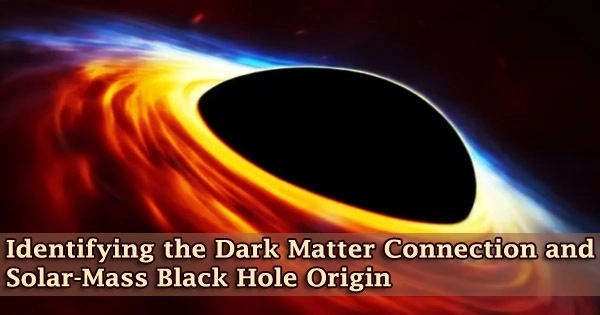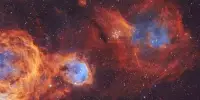How is the mystery surrounding the existence of dark matter related to the genesis of black holes?
The majority of matter in the universe is dark matter, but we don’t yet know what it looks like. Multiple gravitational wave detections of merging black holes have been identified within the last few years by the Laser Interferometer Gravitational-Wave Observatory (LIGO), commemorated with the 2017 physics Nobel Prize to Kip Thorne, Barry Barish, and Rainer Weiss.
The 2020 physics Nobel Prize was given to Andrea Ghez, Reinhard Genzel, and Roger Penrose in celebration of the unambiguous proof of black holes’ existence. Thus, it has become crucial to comprehend the formation of black holes in physics.
Surprisingly, LIGO has recently observed a 2.6 solar-mass black hole candidate (event GW190814, reported in Astrophysical Journal Letters 896 (2020) 2, L44).
Where does it come from if it is a black hole and not an extremely big neutron star?
One “solar mass,” which is equal to the mass of the Sun, is typically used to indicate the mass of a black hole. This amount, or almost 2 × 10^30 kilograms, is incredibly huge. If written out, that is 2 with 30 zeros after it: 2,000,000,000,000,000,000,000,000. The mass of the Earth is nearly a million times less than this.
Solar-mass black holes are particularly intriguing since they are not predicted by traditional theories of star evolution. Black holes of this type could form in the early universe (primordial black holes) or could be “transmuted” from neutron stars that already exist.
Long before the stars and galaxies formed, some black holes may have formed in the early cosmos. Such early black holes might make up all or a portion of dark matter. A primordial black hole that is captured by a neutron star consumes the neutron star from the inside, transforming it into a solar-mass black hole.
Regardless of how small the primordial black holes are, this process can create a population of black holes with a mass of a solar system. A neutron star may eventually collapse into a solar-mass black hole as a result of the accumulation of other types of dark matter.
The majority of galaxies, including our own Milky Way Galaxy, contain supermassive black holes. With masses ranging from millions to billions of solar masses, they are incredibly heavy.
A fresh study that was just published in Physical Review Letters makes a significant contribution to the investigation of solar-mass black holes’ origins. This work was led by the Kavli Institute for the Physics and Mathematics of the Universe (Kavli IPMU) Fellow Volodymyr Takhistov and the international team included George M. Fuller, Distinguished Professor of Physics and Director of the Center for Astrophysics and Space Science at the University of California, San Diego, as well as Alexander Kusenko, Professor of Physics and Astronomy at the University of California, Los Angeles and a Kavli IPMU Visiting Senior Scientist.
According to the study, “transmuted” solar-mass black holes from neutron stars that were eaten by dark matter (either tiny primordial black holes or particle dark matter accretion) should have followed the mass distribution of the original host neutron stars.
It seems improbable that heavier solar-mass black holes have developed as a result of dark matter interacting with neutron stars, given the neutron star mass distribution is predicted to peak at 1.5 solar masses.
This implies that phenomena like the candidate observed by LIGO, if they do in fact form black holes, may have their origins in the early Universe and may therefore have a profound impact on our understanding of astronomy. This test will be used in subsequent observations to look into and pinpoint the source of black holes.
The same international team of researchers has previously shown how the destruction of neutron stars by small primordial black holes can produce a wide range of observational signatures and shed light on long-standing astronomical mysteries like the origin of heavy elements like gold and uranium and the 511 keV gamma-ray excess seen from the center of our galaxy.
















